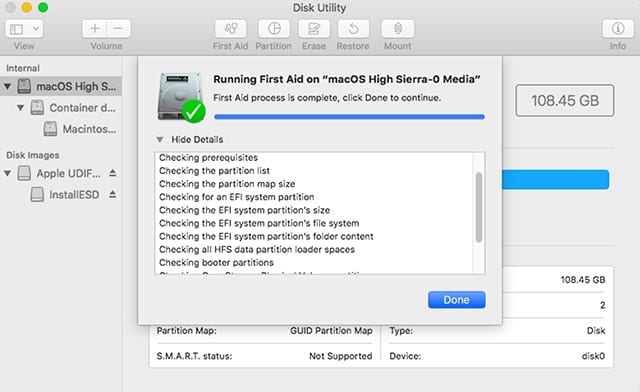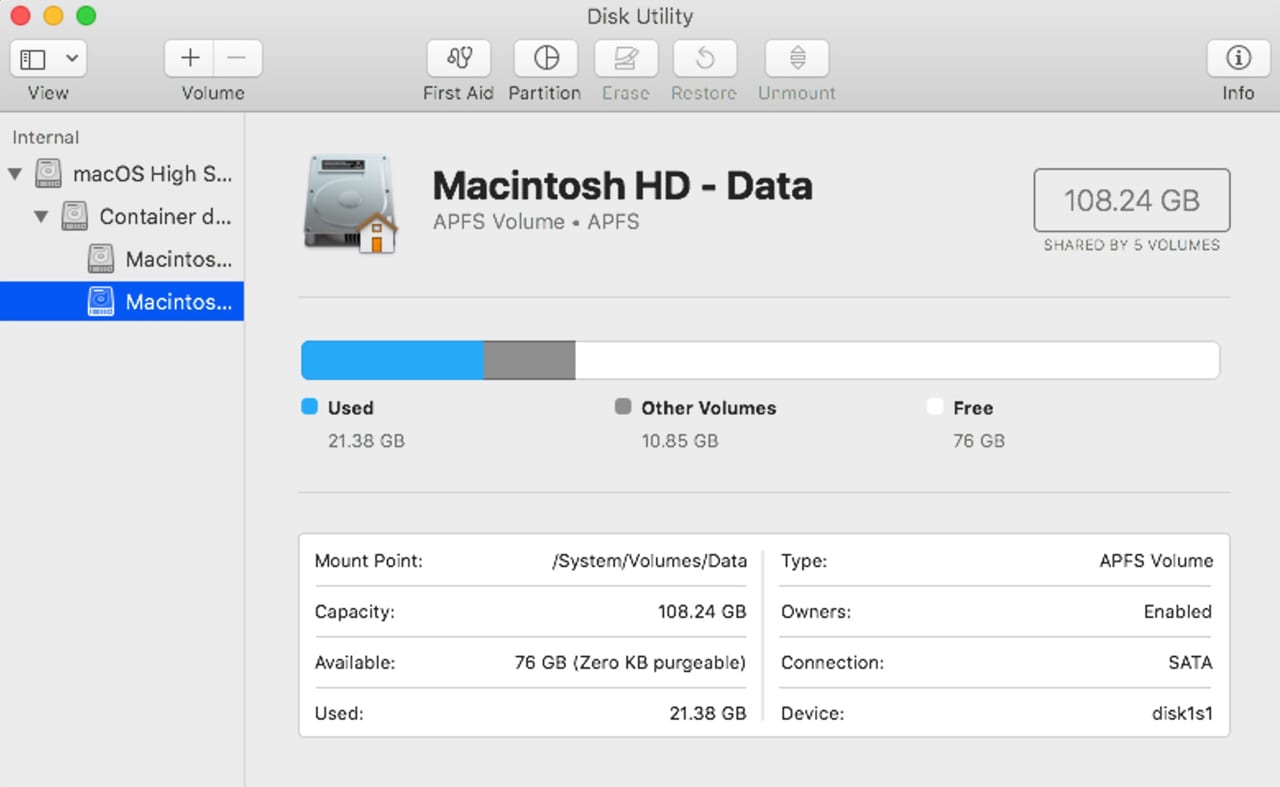Mac Os Catalina Volume Split Fusion Drive
- Mac Os Catalina Volume Split Fusion Drive Reviews
- Mac Os Catalina Volume Split Fusion Drive 2017
- Download Mac Os Catalina
For years, early adopters and beta testers would partition their Mac's hard drive in order to test a new or beta version of macOS. Partitioning your hard drive actually creates a separate container on your hard drive that is limited in its abilities.
The Fusion Drive comes as standard with the following iMacs: 21.5-inch, 4.1GHz Processor, 1TB Fusion Drive: £1,449; Retina 5K, 27-inch, 4.1GHz Processor, 1TB Fusion. Oct 16, 2019 On a late 2013 iMac 1 TB Fusion Drive everything is fine, but on a early 2015 mac book pro 256 gb flash drive it doesn't recognise the availability of Catalina update neither from software update or from App Store: ”your system is up to date Mojave 10.14.6” and ”the requested software is not available”. Oct 24, 2019 On the surface, the macOS Catalina installer appears to copy the operating system files to the startup disk of your Mac. But dig a little deeper and you may realize that it actually splits your boot volume into two distinct components, named Startup and Data. Like most versions of the Mac OS, Catalina allows you to perform two types of installs: an upgrade install and a clean install. The same installer is used for both types but the steps involved are a bit different for each. My Mac only has a 2TB Fusion drive, but my ITunes resides on an external 16 TB drive and takes nearly 12 TB of it.

- The most important thing to do if your Mac has a Fusion Drive: Back up your data The Fusion Drive combines data on an SSD and hard drive, so the loss of either is a huge problem.
- Apr 15, 2020 A number macOS Catalina problems and issues have arisen after its release. That’s always been the case with newly-released operating systems, which means it’s hardly a surprise.
- Oct 08, 2019 Note: I have now updated this with the latest roadmaps for 10.15 release. A further article will follow on 11 October explaining more about these. When you upgrade to macOS 10.15 Catalina, your boot volume will effectively be split into two. Assuming it's the standard internal storage, your existing boot volume will be renamed to.
If your Mac uses APFS, you can actually create a volume right on your current hard drive instead. This allows your hard drive to manipulate your available storage temporarily as you need it. It makes testing new or beta operating systems much easier to do and easier to remove when you're done testing them out.
IMPORTANT: The developer beta of Big Sur is currently experiencing some issues with installing and updating versions including and most importantly, installing Big Sur onto separate volumes.
From Apple's developer support notes for Dev beta 2:
You might be unable to install macOS Big Sur 11 beta onto additional volumes. (63677460, 64445236)
If macOS Big Sur 11 beta is installed into the same APFS container as previous versions of macOS, system software updates can no longer be installed on the previous versions of macOS. (64411484)
If you are installing the developer beta of macOS Big Sur, we highly recommend going with partitioning your hard drive not creating a volume.
Before you start
The most important thing to do before making any changes to your hard drive is to back it up. Seriously. Back it up. Please. Time Machine is the easiest way to back up your data if you don't already have another system in place.
Second, make sure you have enough free disk space to properly run a secondary operating system. Shoot for at least 30GB free, though I recommend closer to 50GB if you have it available.
What's the difference between a disk partition and a volume?
A partition and a volume act in very similar ways, but creating a volume allows for flexibility of storage needs while creating a partition separates storage with a specific amount and does not adjust for each drive's needs.
What is a partition?
Partitioning your Mac is basically splitting your hard drive into separate, usable systems. It makes it possible to run two separate operating systems on one device, like Windows and macOS, or two versions of macOS (like Catalina and Big Sur).
Note: If you want to run Windows on your Mac, Apple's Boot Camp assistant will automatically make a partition for you. Here's how to install Windows.

It is important to note that partitioning your hard drive also splits up your available hard drive space. Each partition will take up a portion of your usable storage. So, if you are running low on storage capacity on your hard drive, we don't recommend partitioning.
If you are running a Mac using HFS+ file system (prior to macOS Catalina) you must partition your hard drive. If your Mac uses APFS, Apple recommends creating a volume instead.
What is an APFS volume?
An APFS volume creates a similar container to be used the same way as a partition, but it mounts it within your main hard drive. This allows the volume the flexibility to grow or shrink in storage size as needed. You don't have to worry about running out of temporary space while installing macOS, for example, because it will grab the necessary space from your main drive and then put it back when it's done. You can manually select size limiters for a volume if you're worried about one drive overtaking another's space.
If your Mac uses APFS, Apple recommends creating a volume instead of a partition.
How to add an APFS volume on Mac
You can test the beta of Big Sur on your Mac without having to change anything on your daily driver by creating a volume that acts as a separate drive so you can install a completely different operating system. This allows you to switch between OSes using the Startup Disk option.
- Open Finder from your Mac's dock.
Select Applications.
Source: iMore
- Scroll down and open the Utilities folder.
Double-click on Disk Utilities to open it.
Source: iMore
- Select your APFS drive (Should be called Macintosh HD) from the sidebar.
Enter a name for the volume.
Source: iMore
- Select the type of APFS format you want. I recommend just APFS.
Click Add.
Source: iMore
You have the option of selecting a specific size that you want the volume to be, which will guarantee this volume will always have the reserve size you want. However, APFS volumes are designed to allocate disk space as needed. If you're worried about running out of disk space on either your main drive or the new volume, you can select a minimum/maximum volume size. After completing Step 7 above:
- Click Size Options.
- Enter a Reserve size to ensure that the new volume will always have a minimum amount of space.
Enter a Quota size to ensure your main drive never runs out of space.
Source: iMore
- Click OK.
Click Add.
Source: iMore
How to create a partition on your Mac
- Open Finder from your dock.
Select Applications.
Source: iMore
- Scroll down and open the Utilities folder.
Double-click to open Disk Utility.
Source: iMore
- Select your hard drive in the Disk Utility window. It will be the first drive on the list. It might be named 'Fusion,' or 'Macintosh HD.'
- Click on the Partition tab. You will be prompted to either add an APFS volume or a Partition.
Click Partition.
- Click the Add partition button it looks like a plus (+) symbol.
- Change the size of the partition you wish to use by dragging the resize controls. The used space is represented in blue.
- Name the new partition.
- Specify which file system format you want to use. If you're running macOS 10.13 or higher, you'll want APFS. If you are running macOS 10.12 or older, you'll want Mac OS Extended.
Click apply.
Disk Utility will check the disk and make changes. This will take several minutes.
How to switch partitions or volumes
You can switch to the new partition, install the current macOS, and then download and install macOS Catalina from there.
Mac Os Catalina Volume Split Fusion Drive Reviews
- Click the Apple icon in the upper-left corner of your screen.
Select System Preferences from the drop-down menu.
- Select Startup Disk.
Click the Lock in the lower left corner of the window to unlock and make changes.
- Enter your system admin password.
- Click OK.
- Select your partition drive.
Click Restart.
You can also restart your Mac and press the Option Key when you hear the startup chime. This will take you to the Startup Manager and you can select your drive from there.
You will then be asked to install macOS. This will install the latest available macOS onto the partitioned hard drive. You may have to install an older version of macOS before updating it to the more recent version you want to run.
If you are testing a beta version of macOS, you'll first install whatever the current version is. Then, you can then install the macOS beta.
How to download the beta of macOS Big Sur
Once you've updated your partitioned Mac with macOS Catalina, you can download and install the beta of macOS Big Sur. For the developer beta, you need a developer account and some patience. Developer betas are often a bit complicated to install. We've got a guide to help you out.
:max_bytes(150000):strip_icc()/ScreenShot2020-04-01at3.55.27PM-eb4c5b4bd4ae40588f0a7a388afe62aa.jpg)
Any questions?
Do you have any questions about installing a partition or downloading a new operating system onto a partitioned drive? Let us know in the comments. If you're having trouble partitioning your hard drive, be sure to check out our forums for help!
Updated June 2020: Updated for the developer beta of macOS Big Sur.
Mac Os Catalina Volume Split Fusion Drive 2017
We may earn a commission for purchases using our links. Learn more.
DowncordDiscord and others are down worldwide due to issues with Cloudfare
Download Mac Os Catalina
Discord appears to be down worldwide due to some kind of outage. The team at Discord has acknowledged the issue, and promises that a fix is on the way.